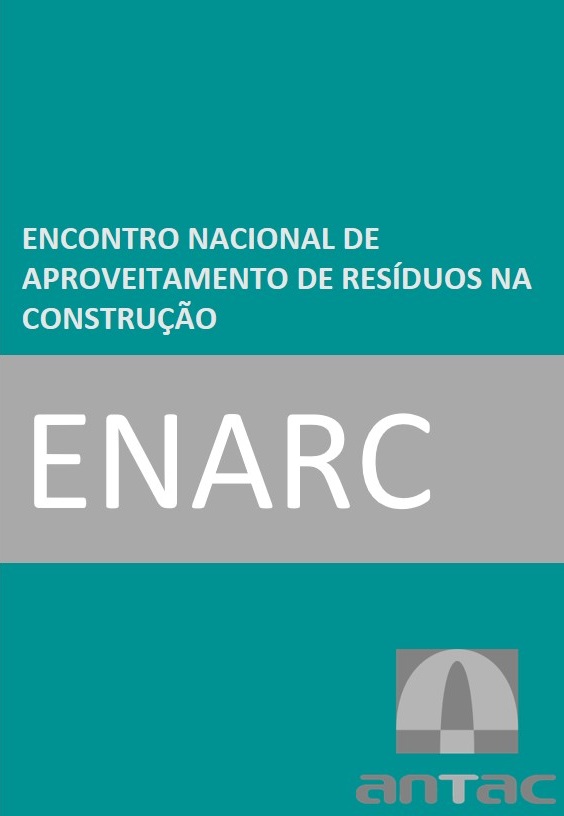Levels of concentration of lubricating oils on concrete floor of industrial learning environment, with consequential soil contamination
DOI:
https://doi.org/10.46421/enarc.v8i00.2908Keywords:
soil contamination, hydrocarbons, concrete penetrationAbstract
Industrial floors are often exposed to contamination, including oils and greases from a variety of sources. In this case study, a metalworking laboratory in operation for 42 years received polyurethane-based paint on its concrete floor, appearing oil bubbles on the surface of the new paint. Based on this, the objective of this work was to determine the level of contamination of the floor with hydrocarbons, in order to understand the problem encountered. The test carried out, according to the SM 5520E standard for detecting the presence of hydrocarbons, shows that in the areas most expected by the pathological manifestation, the concentration of hydrocarbons is 74%, 45% and 14% higher with each layer of protected concrete, in relation to the same layer in the control region. In addition, there is a concentration of hydrocarbons in the soil below the floor, 51% higher in relation to the control region and 91% higher than in the adjacent concrete region.
References
ABNT, ASSOCIAÇÃO BRASILEIRA DE NORMAS TÉCNICAS. NBR 10004, Resíduos Sólidos: Classificação. Rio de Janeiro: ABNT, 2004.
APROMAC. Associação de Proteção ao Meio Ambiente de Cianorte. Relatório de Gestão no Conselho Nacional de Meio Ambiente - CONAMA: justificativa da opção pelo rerrefino. Cianorte: APROMAC, 2005.
BRASIL. Lei Nº 12.305, de 02 de agosto de 2010. Institui a Política Nacional de Resíduos Sólidos; altera a Lei no 9.605, de 12 de fevereiro de 1998; e dá outras providências. Brasília, DF: Diário Oficial da União, 2010.
CARVALHO, R. G., KRUK, N. S., KAWACHI, E. Y., QUEIROZ, P. I. B. Um método de ensaio para determinação da concentração de óleo em amostras de águas contaminadas com óleos e graxas. Engenharia Sanitaria e Ambiental, v. 24, n.3, 2019. ISSN 1809-4457. https://doi.org/10.1590/S1413-41522019127950.
DAVOODI, S.M., MIRI, S., TAHERAN, M., BRAR, S.K., GALVEZ-CLOUTIER, R., MARTEL, R. Bioremediation of Unconventional Oil Contaminated Ecosystems under Natural and Assisted Conditions: A Review. Environmental Science & Technology. v. 54, n. 4. 2020. ISSN 2054-2067. https://doi.org/10.1021/acs.est.9b00906.
EUZÉBIO, C. S., RANGEL, G. S., MARQUES, R. C. Derramamento de petróleo e seus impactos no ambiente e na saúde humana. Revista Brasileira De Ciências Ambientais v. 52. 2019. ISSN 2176-9478. http://dx.doi.org/10.5327/Z2176-947820190472.
GAST, L. E., KUBIE, W.L., COWAN, J. C. Linseed oil on concrete: Penetration of linseed oil compositions into sheet-and liquid membrane-cured concretes. Journal of the American Oil Chemists' Society. v. 48, n. 12. 1971. ISSN 1558-9331. https://doi.org/10.1007/BF02609288.
GUSMÃO, J. S., FRAGA, M. S., DIAS, J. S. A logística reversa aplicada aos óleos lubrificantes usados ou contaminados produzidos nos postos de combustíveis da cidade de Boa Vista-RR. Caderno de Ciências Humanas e Sociais Aplicada. 2013.
JOHN, R. C., NTINO, E. S., ITAH, A. Y. Impact of crude oil on soil nitrogen dynamics and uptake by legumes grown in wetland ultisol of the Niger Delta, Nigeria. Journal of Environmental Protection, v. 7, n. 4, 2016. ISSN 2152-2219. http://dx.doi.org/10.4236/jep.2016.74046.
MAPA, MINISTÉRIO DA AGRICULTURA, PECUÁRIA E ABASTECIMENTO. Métodos Oficiais para Análise de Produtos de Origem Animal. Brasília, DF: 2022.
MENG, X.H. LIU, S.Y. LU, T.T. ZHANG, B.H. JIN, WANG, Q. A review on occurrence and risk of polycyclic aromatic hydrocarbons (PAHs) in lakes of China. Science of The Total Environment. v. 651, n. 2. 2019, ISSN 1879-1026 https://doi.org/10.1016/j.scitotenv.2018.10.162.
STANDARD METHODS COMMITTEE OF THE AMERICAN PUBLIC HEALTH ASSOCIATION, AMERICAN WATER WORKS ASSOCIATION, AND WATER ENVIRONMENT FEDERATION. Standard Methods for the Examination of Water and Wastewater: 5520 Oil and Grease. 24. ed. Washington DC: APHA Press, 2022. 1516 p. ISBN 0875532993.
SILVEIRA, E. L. C., CALAND, L. B., MOURA, C. V. R. Determinação de contaminantes em óleos lubrificantes usados em esgotos contaminados por esses lubrificantes. Química Nova, v. 29, n. 6. 2006. ISSN 1678-7064. https://doi.org/10.1590/S0100-40422006000600009.
WANG, S., XU, Y., LIN, Z., ZHANG, J., NORBU, N., LIU, W. The harm of petroleum-polluted soil and its remediation research. AIP Conference Proceedings, v. 1864, n. 1, 2017. ISSN 1551-7616. https://doi.org/10.1063/1.4993039.
WANG, W., GAO, Y., DU, J., ZHENG, L., KONG, X., WANG, H., DUAN, L., LIU, Y., NAIDU, R. Dose–effect of nitrogen regulation on the bioremediation of diesel contaminated soil. Environmental Technology & Innovation, v. 32. 2023. ISSN 2352-1864. https://doi.org/10.1016/j.eti.2023.103245.

